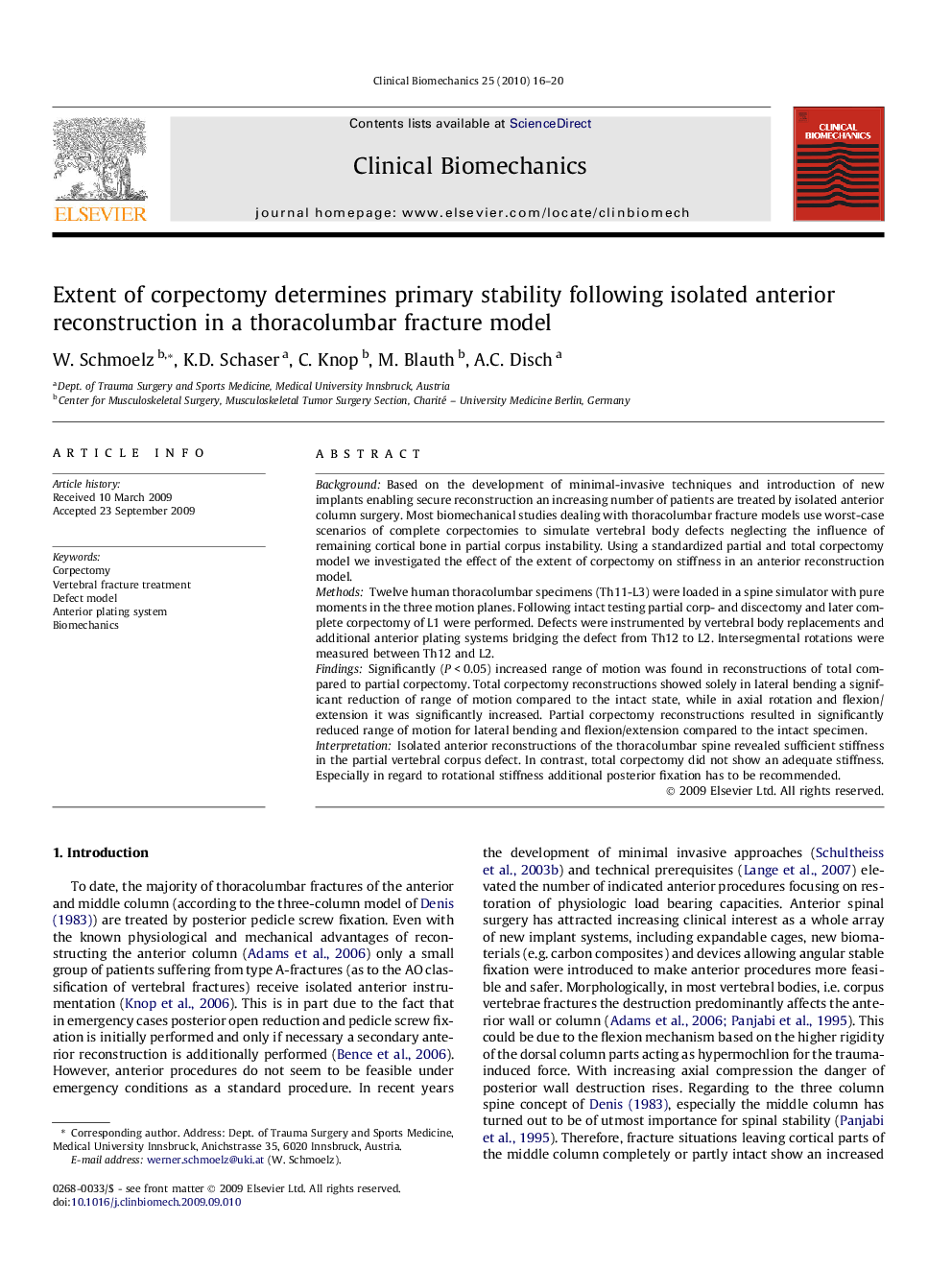| Article ID | Journal | Published Year | Pages | File Type |
|---|---|---|---|---|
| 4051144 | Clinical Biomechanics | 2010 | 5 Pages |
BackgroundBased on the development of minimal-invasive techniques and introduction of new implants enabling secure reconstruction an increasing number of patients are treated by isolated anterior column surgery. Most biomechanical studies dealing with thoracolumbar fracture models use worst-case scenarios of complete corpectomies to simulate vertebral body defects neglecting the influence of remaining cortical bone in partial corpus instability. Using a standardized partial and total corpectomy model we investigated the effect of the extent of corpectomy on stiffness in an anterior reconstruction model.MethodsTwelve human thoracolumbar specimens (Th11-L3) were loaded in a spine simulator with pure moments in the three motion planes. Following intact testing partial corp- and discectomy and later complete corpectomy of L1 were performed. Defects were instrumented by vertebral body replacements and additional anterior plating systems bridging the defect from Th12 to L2. Intersegmental rotations were measured between Th12 and L2.FindingsSignificantly (P < 0.05) increased range of motion was found in reconstructions of total compared to partial corpectomy. Total corpectomy reconstructions showed solely in lateral bending a significant reduction of range of motion compared to the intact state, while in axial rotation and flexion/extension it was significantly increased. Partial corpectomy reconstructions resulted in significantly reduced range of motion for lateral bending and flexion/extension compared to the intact specimen.InterpretationIsolated anterior reconstructions of the thoracolumbar spine revealed sufficient stiffness in the partial vertebral corpus defect. In contrast, total corpectomy did not show an adequate stiffness. Especially in regard to rotational stiffness additional posterior fixation has to be recommended.
